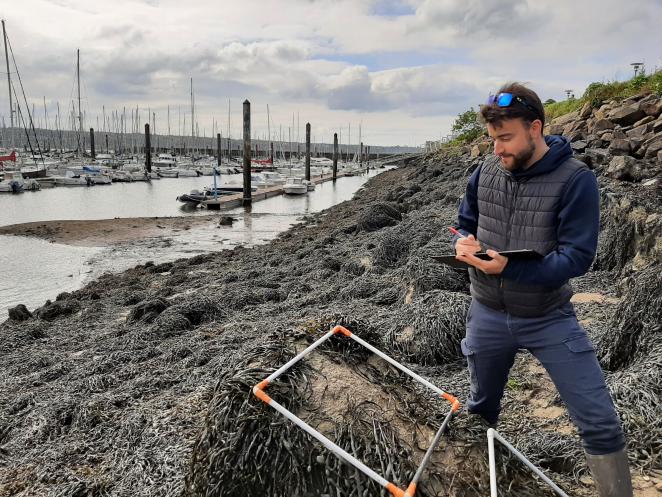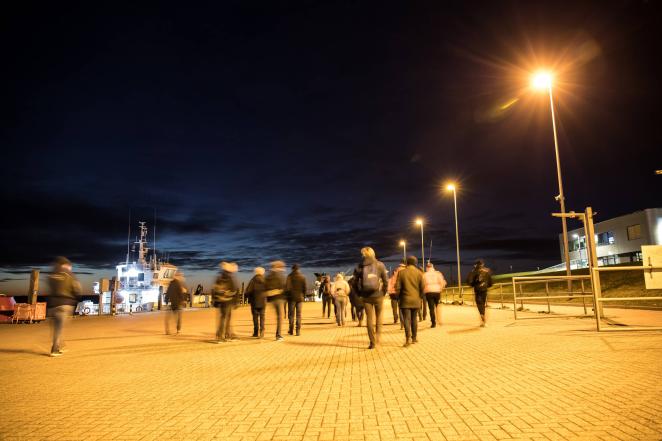The Interreg North Sea Project DARKER SKY kicked off with a clear mission: supporting municipalities and ports to protect biodiversity with the implementation of light-reduction solutions balancing environmental concerns with the needs of people and cities. Over the past year, we've made significant strides towards that goal.
Bringing experts together to combat light pollution
Photo: Jan-Willem van Kruyssen
Tackling light pollution requires bridging gaps between various fields of expertise and across borders. While excessive artificial lighting stresses the environment, it is also essential for human activities like safety, work and transportation. The challenge lies in finding a balance—meeting safety and energy efficiency needs, ensuring social acceptance and minimising environmental harm, all while navigating complex regulations and financial constraints.
Recognizing this, our starting point was to bring together experts from diverse fields. Astronomers, ecologists studying birds, bats, insects and marine life, lighting designers and municipal planners all contributed their unique insights. This collaboration across countries and disciplines enabled us to work towards a shared goal: developing practical, holistic solutions that consider the priorities of all stakeholders. Our focus is on supporting ports and municipalities implementing balanced light-reduction strategies. By starting the project with this aim and the established strong collaboration, we’ve built a solid foundation our first year.
Laying the groundwork: a monitoring framework for light pollution

Photo: Enora Morin
Combining the expertise of our partners, one of the main achievements in our first year was the creation of a comprehensive monitoring framework. Once developed into guidelines, it will help municipal practitioners—those who may not be experts in light pollution—understand and assess how artificial lighting affects their communities and local biodiversity.
The framework includes two key protocols: one for measuring and monitoring light levels and another for investigating the ecological effects on birds, bats, insects and marine life. Monitoring will take place before and after the light modifications are implemented at our demonstrator sites, helping us assess the impact of these changes on light pollution and biodiversity. We’ve also developed a sociological survey to assess the perceptions of the local community regarding light pollution and the new lighting modifications.
Turning plans into action: progress at demonstrator sites

Photo: NPorts/Buczior
With the monitoring framework in place, we started with the pre-measurements at our 9 demonstrator sites (conditions before the light modifications), implementing and testing our protocols. This included taking light measurements, monitoring ecological impacts on local species and evaluating the needs of the stakeholders involved.
Next, the lighting modifications at our demonstrator sites will take place. For these, lighting plans for environmentally sound light-reduction solutions are developed. In Brest, Hamburg and Norddeich, the co-design of lighting plans with local administrations has been finalised. At other sites, like Lauwersoog and Holwerd, progress is being made through a bottom-up approach involving the local community. Whether driven by municipal planners or citizens, the goal remains to create environmentally sound lighting infrastructure that benefits both people and nature.
Raising awareness in our communities
Photo: Anna Vollmer
Alongside the technical progress, we also focused on raising awareness about light pollution. Through workshops in our partner regions, we encouraged municipalities and communities to look at their lighting infrastructure in a new light—one that not only considers human needs but also the environmental impact. By transferring this knowledge to municipalities and demonstrator sites, we already succeeded in putting light pollution forward on the agenda of local authorities.
What’s next for DARKER SKY
As we close the first year, we are preparing for the next main phase: planning and constructing our lighthouse demonstrators—environmentally sound lighting solutions at our demonstrator sites. Though the full impact of these solutions is not known yet, our monitoring and evaluating systems are already in place and we look forward to seeing the results once the light modifications are implemented and evaluated. This will allow us to provide final recommendations for sustainable lighting solutions.
The next year will also focus on policy exchange—both regionally and transnationally—with the aim of integrating light pollution reduction strategies into regional and national policies and policy-driven processes and initiatives. By continuing this work, we hope to foster more effective policies to reduce light pollution and to create dark sky corridors across the North Sea region.
Take a look at our timeline below to see our progress at a glance!

